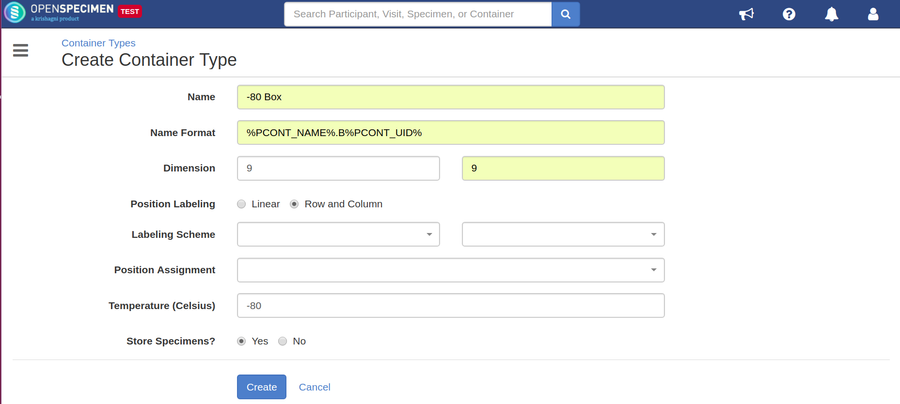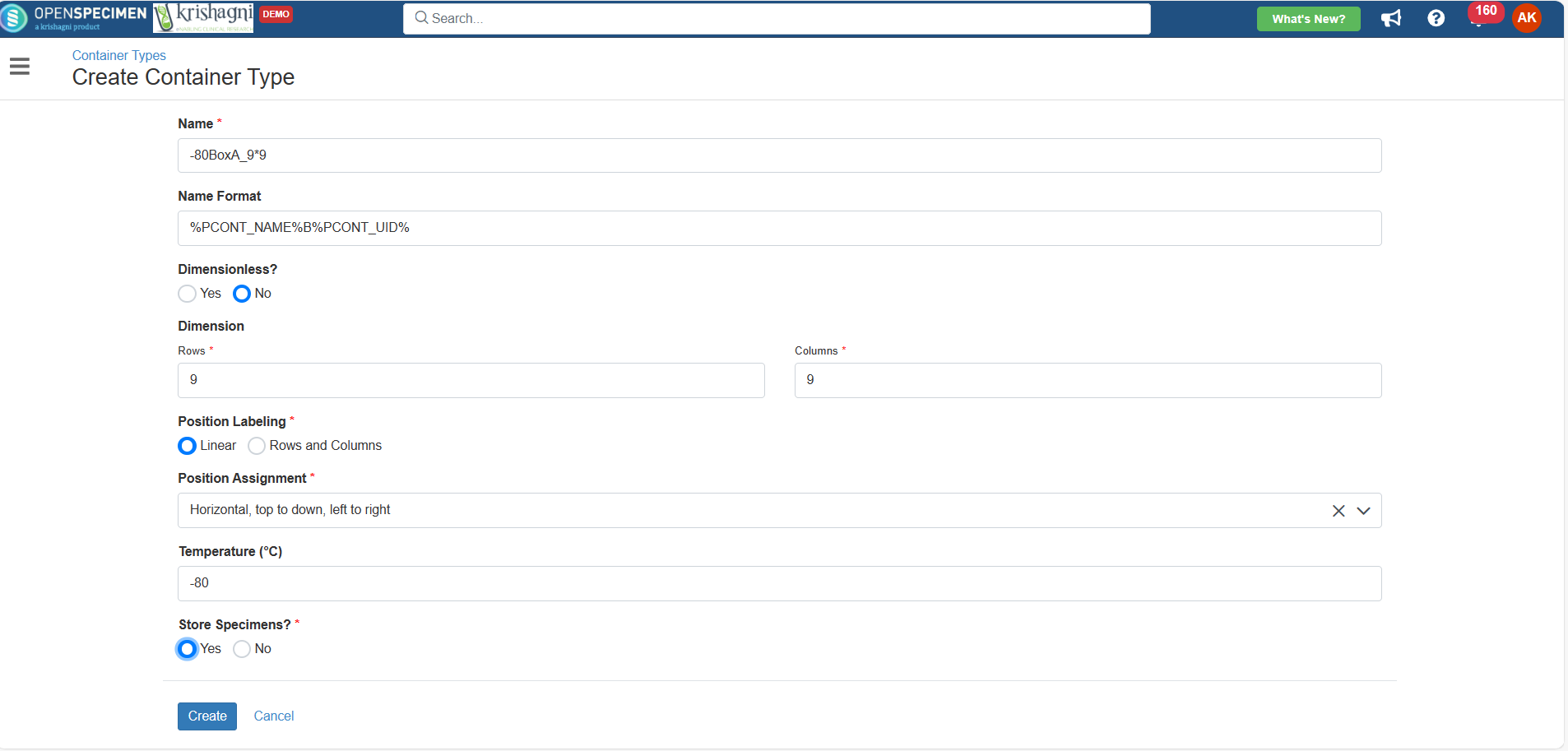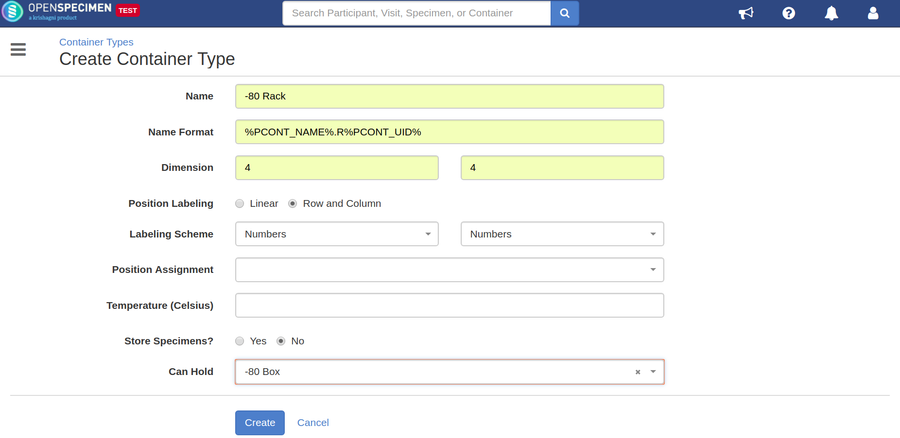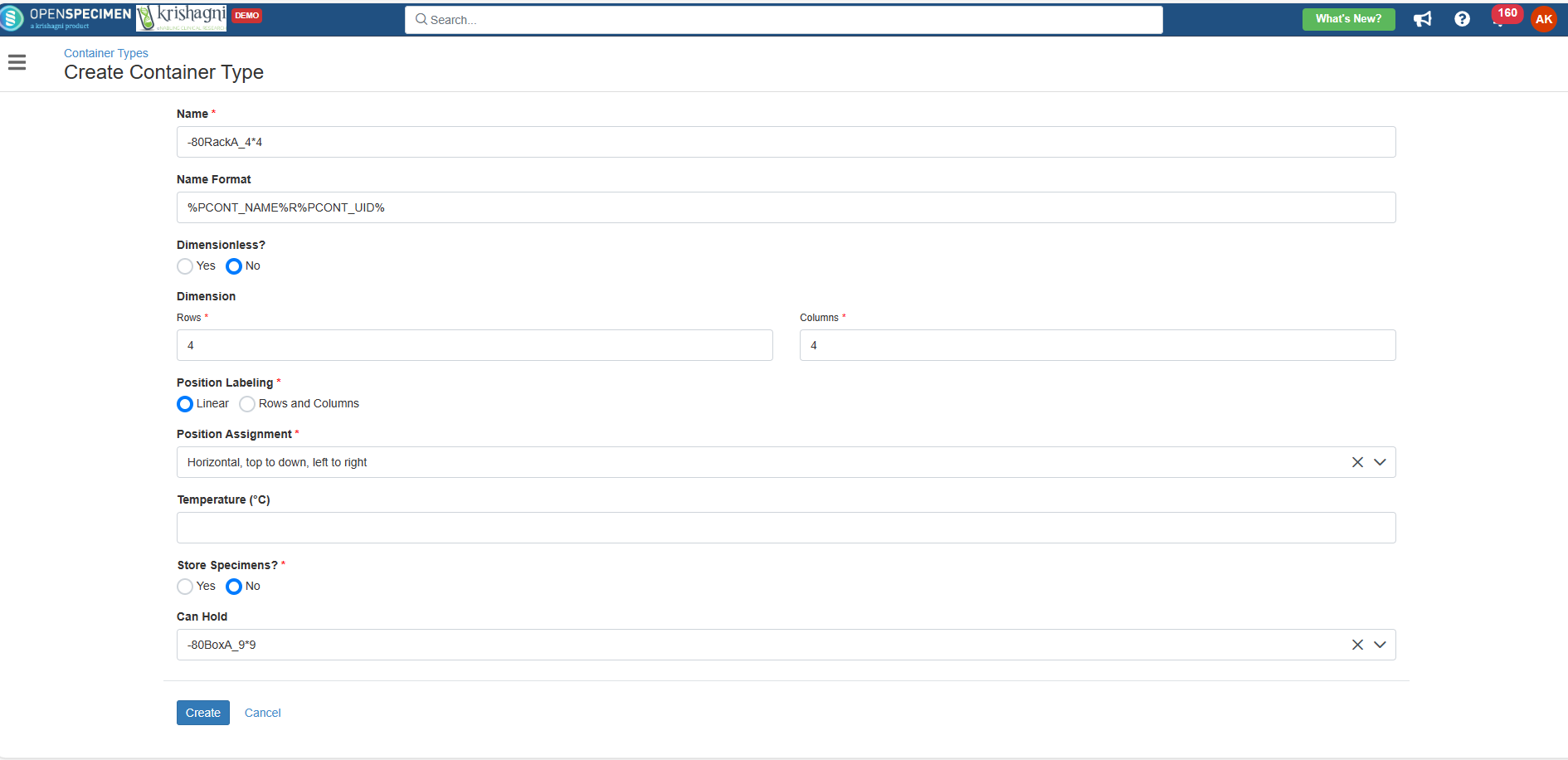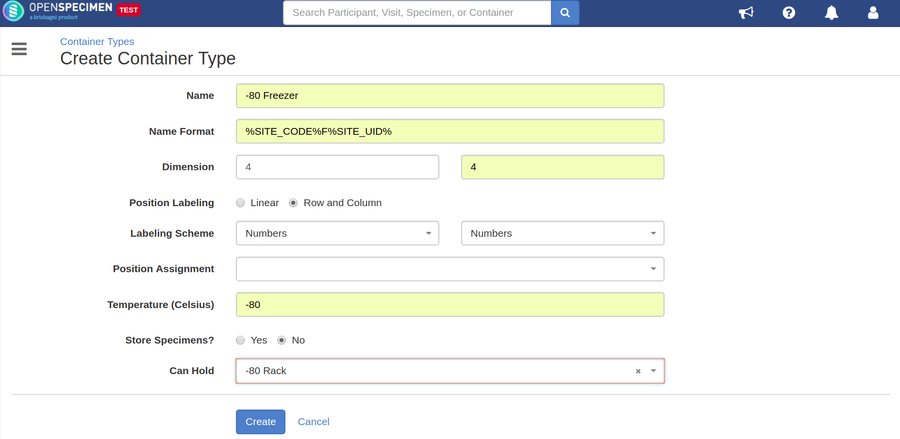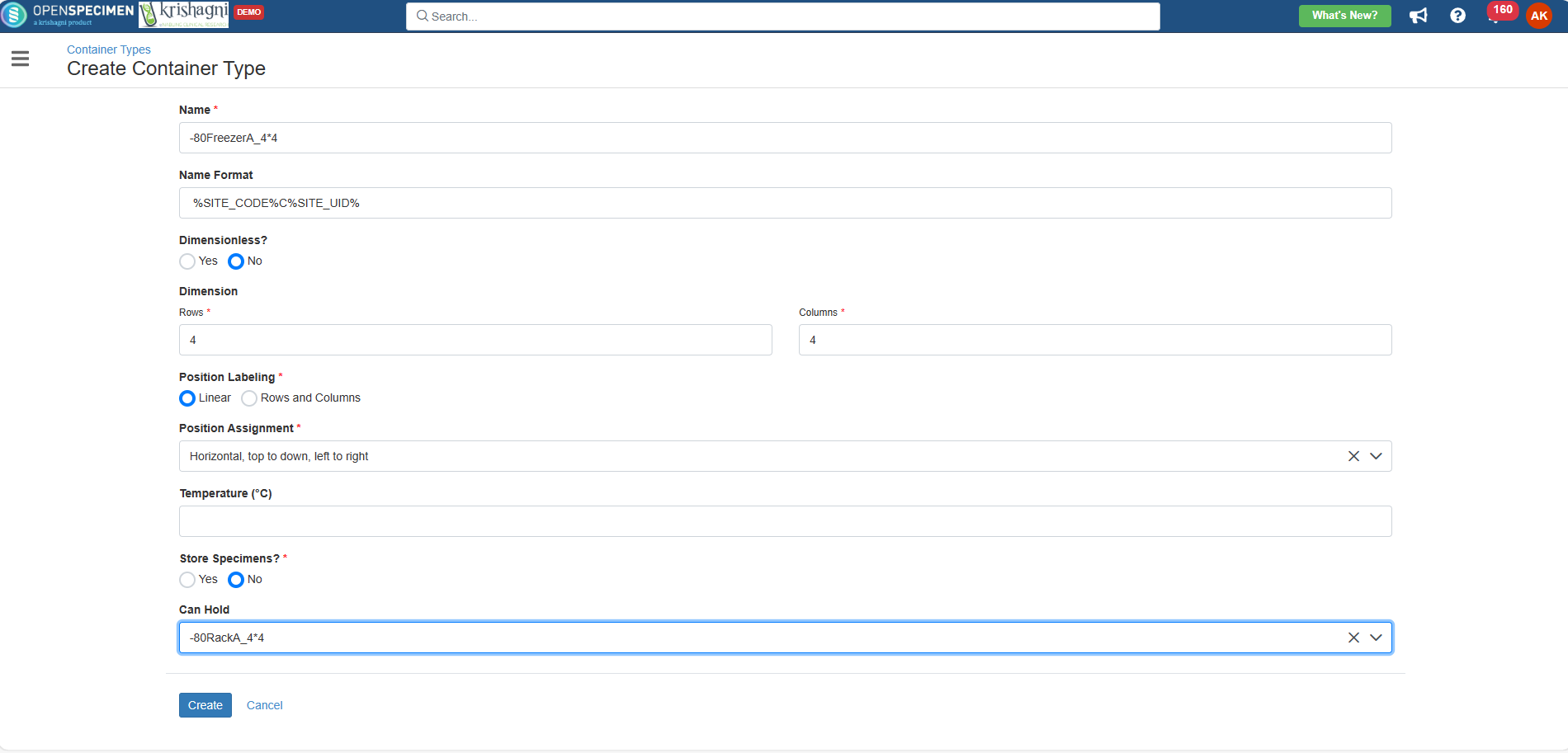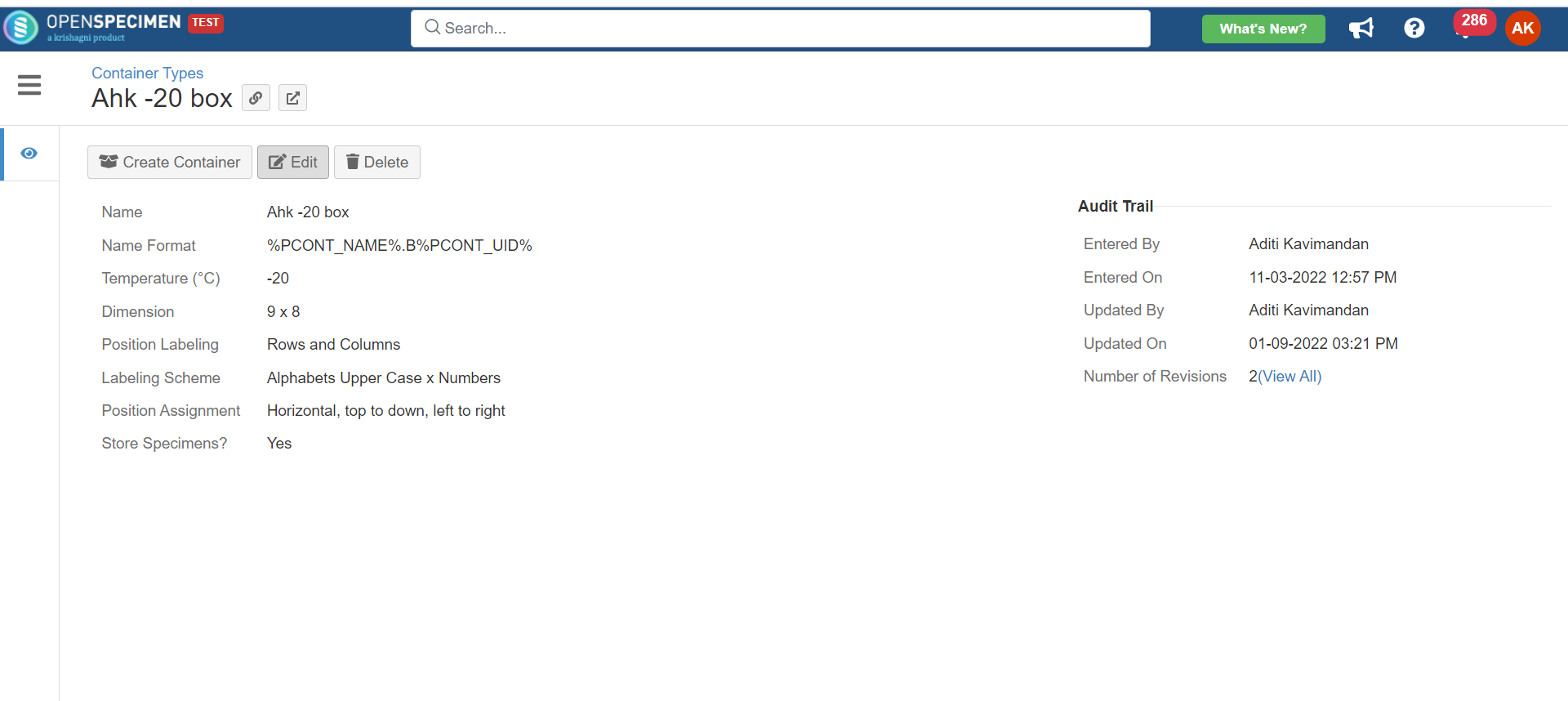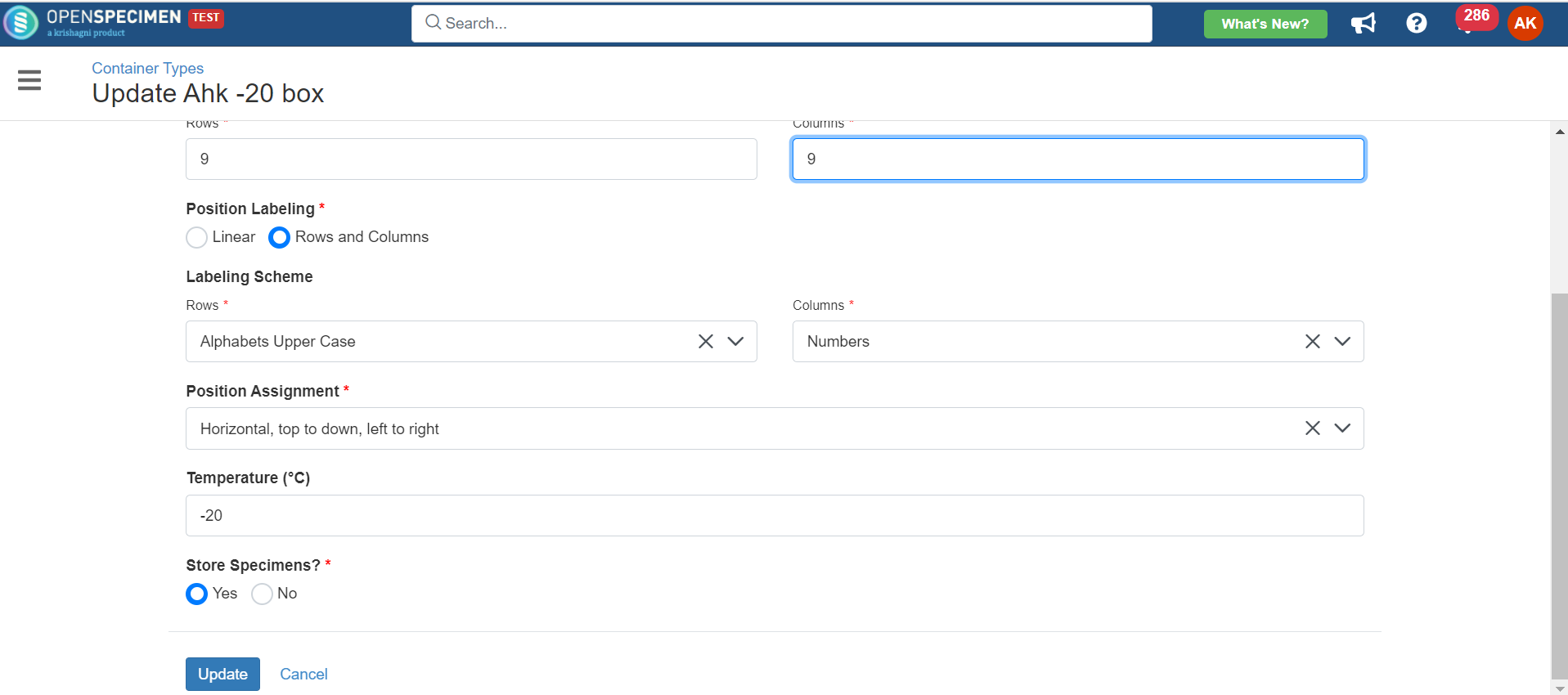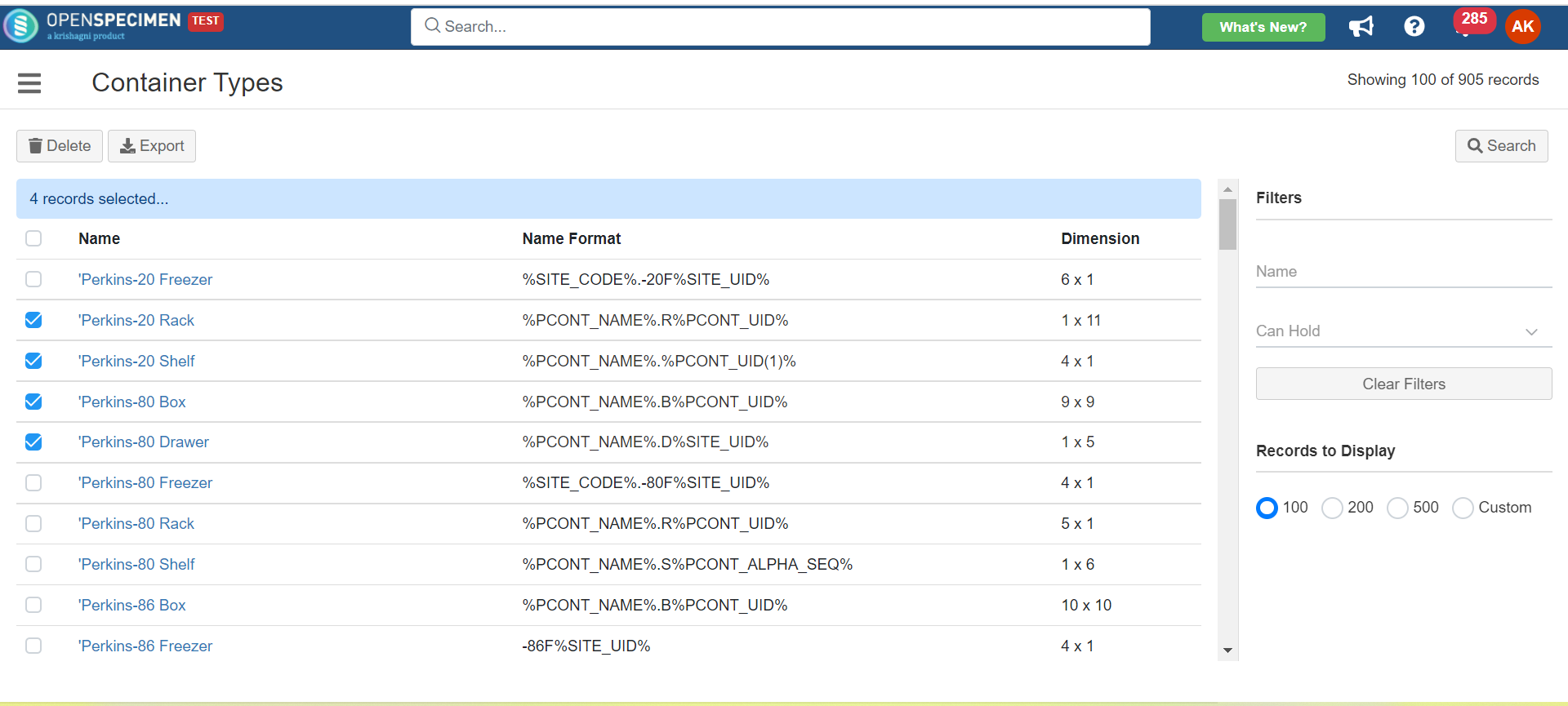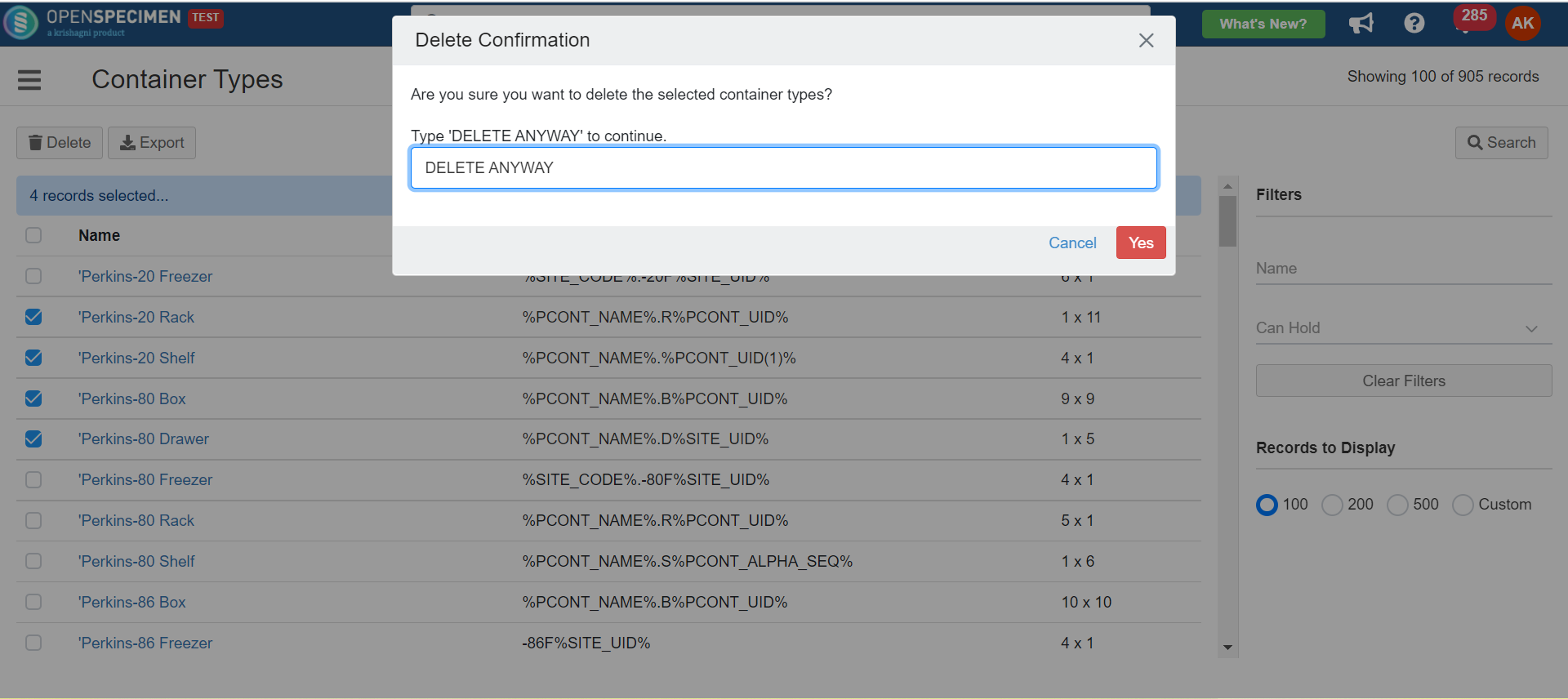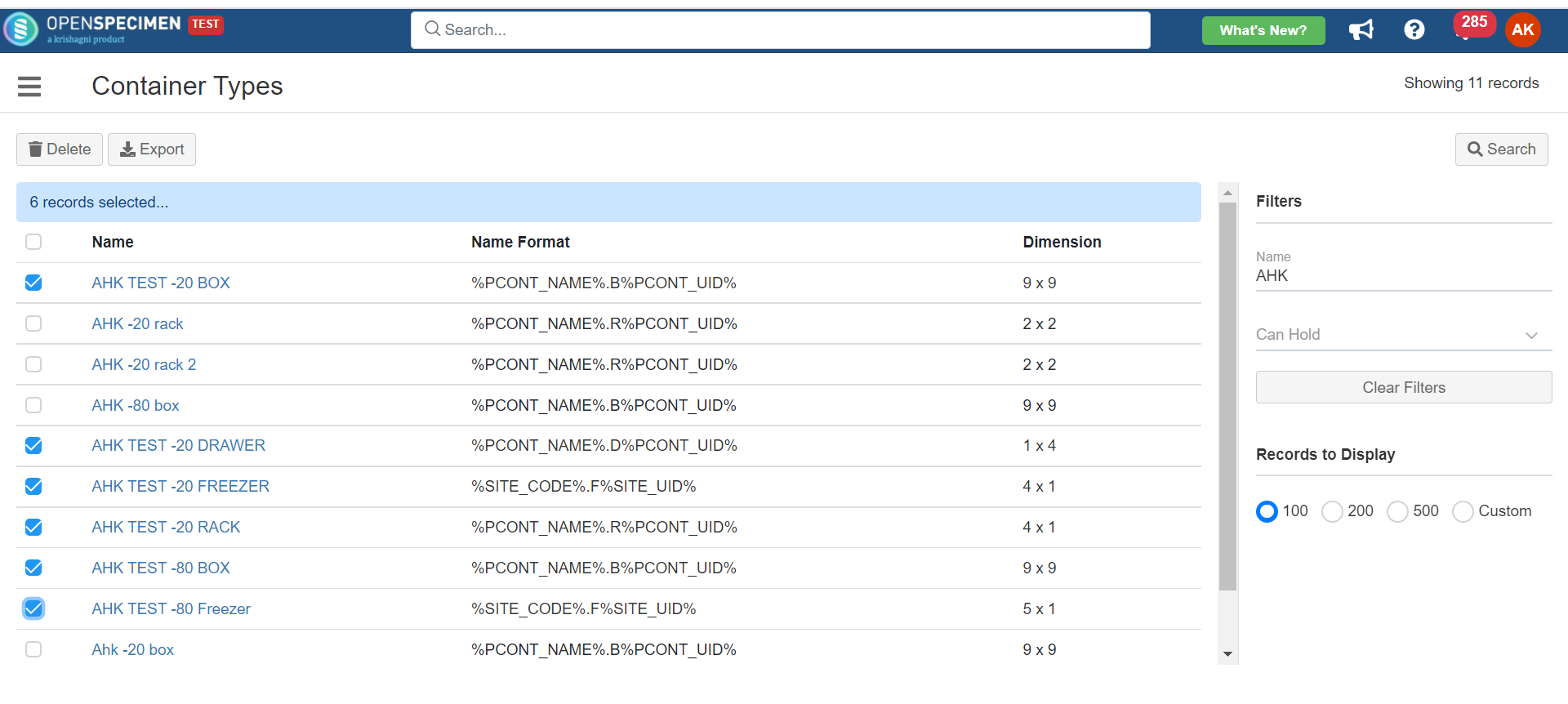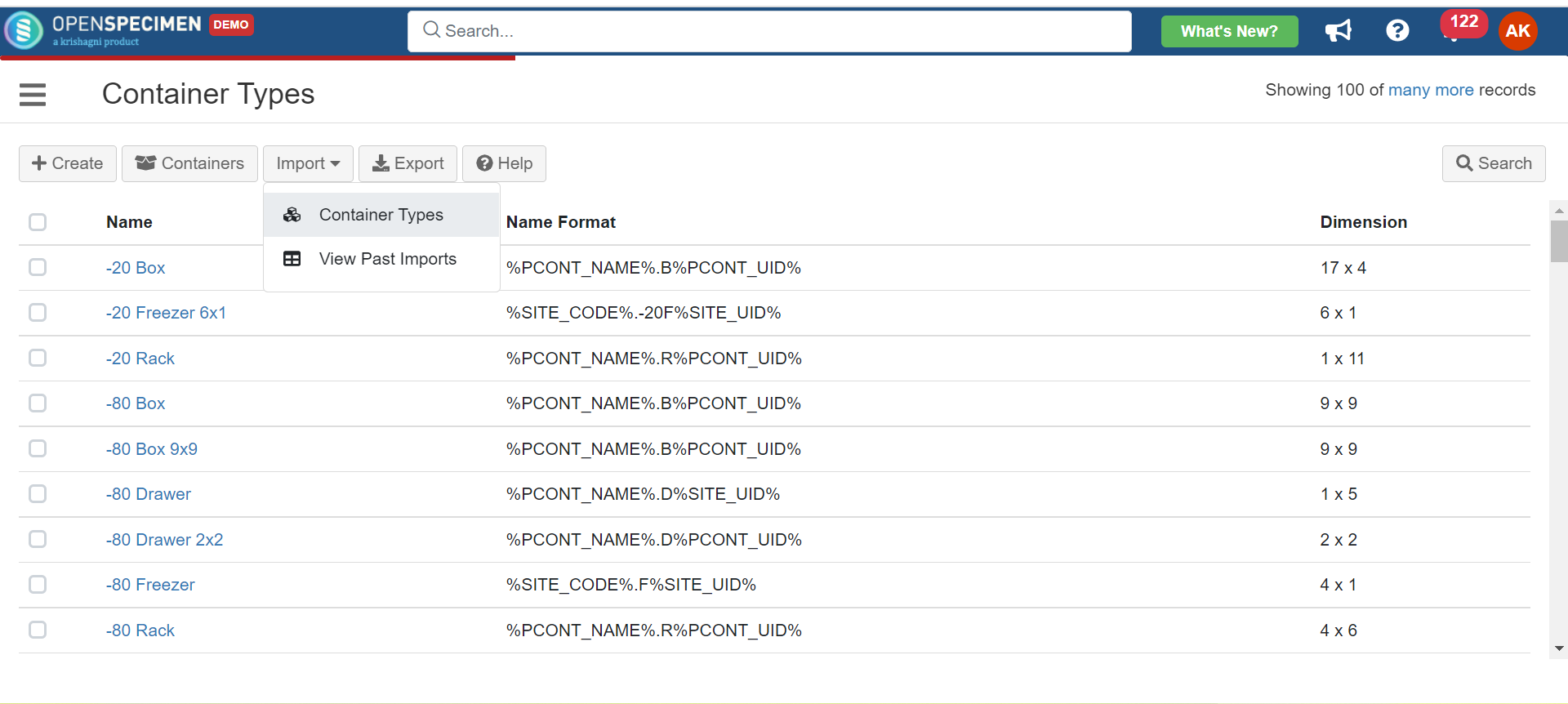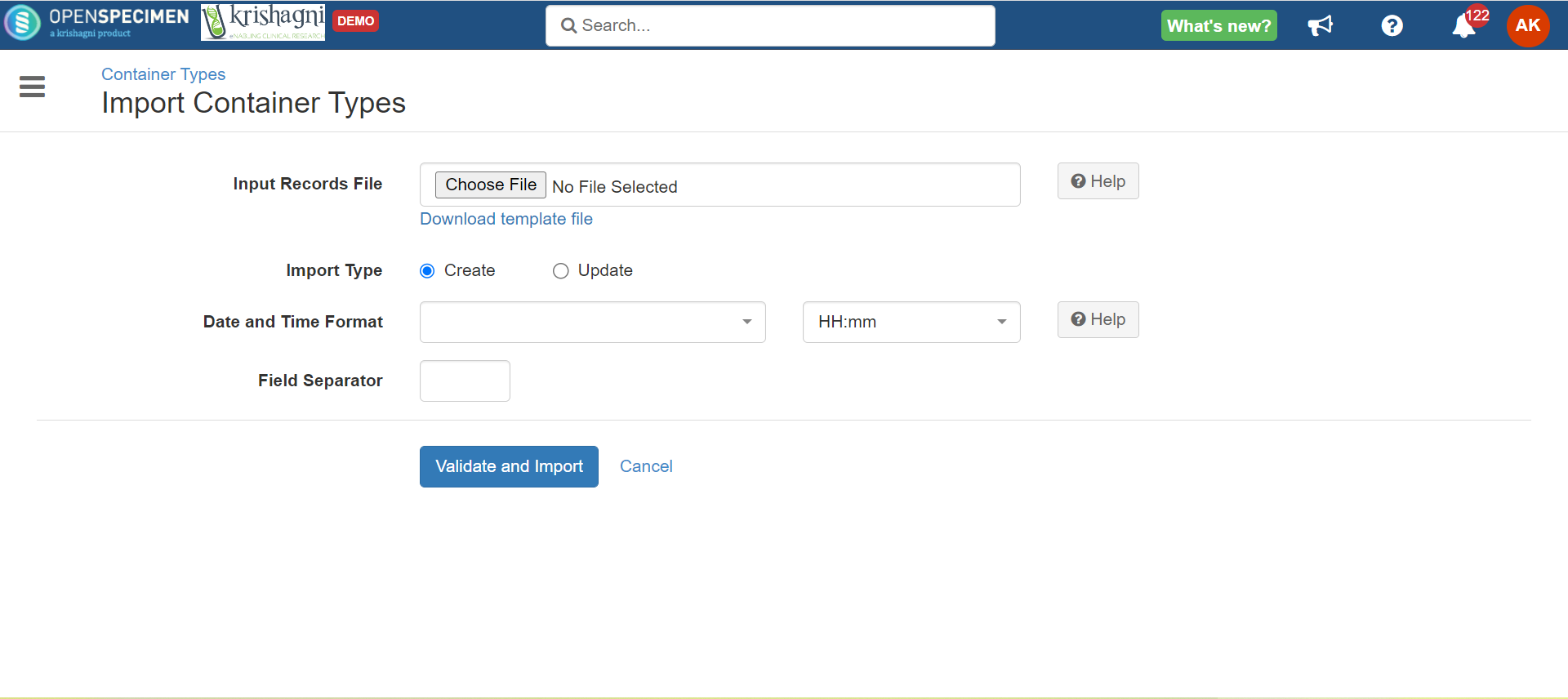| Table of Contents |
|---|
Introduction
Container The container type is a 'template' that can be used to create containers. You can create it once and reuse it every time you create new containers.
| Note |
|---|
Container type is optional to create in creating a container. From v4.2, OpenSpecimen is shipped with default container types. |
Prerequisite
Before you set up a container type, find out Only super administrators or institute admins can add or edit a container type. Before creating a container, one should have the below-required mentioned details:
- Size
Layout of the container
Naming format
...
(Naming format for container type is optional from v10.3 onwards)
| Info |
|---|
From v10.3 onwards: Naming format for container type is optional. Many clients do not use the auto-generated names (e.g., F1_S1_R1_D1) for the boxes as they move across drawers/racks. Thus, while creating boxes via UI using container type, they have to edit individual box name after creation. |
Creating a container type
Select 'Containers' from the dashboard
Click on 'Types' and then click 'Create.'
| Info | |
|---|---|
| title | Bottom-up approachSet up container types using the 'bottom-up' approach. For example, to create a type for a -80 freezer that holds racks and boxes, create types in the order of Box→Rack→Freezer. Otherwise, you will not be able to select container type for the 'Can hold' field for the freezer. (Since you have not created rack and box first.) |
| Expand | ||
|---|---|---|
| ||
The example below shows a box that has a dimension of 9 rows by 9 columns. This means each box can hold a maximum of 81 specimens. 2. Create a container type for a rack that holds a box The example below shows a -80 rack that has with a dimension of 4 rows by 4 columns. This means that it has 16 shelves , so that each rack can hold 16 boxes. 3. Create a container type for a freezer that holds the rack The example below example below shows a -80 freezer that has with a dimension of 4 rows by 4 columns. This means that it has 16 shelves , so the freezer can hold 16 racks. |
Create dimensionless container type (v10.3)
From v10.3 onwards, you can create dimensionless container types that can be used to create containers and in container auto-allocation strategy. Refer to the wiki page Dimensionless containers for more details
Label formats to create container types
To define container name format, users Users can use available tokens to generate unique container names to define container name format. This allows the system to auto-generate container name names rather than a user creating labels at every level manually.
Notes:
To create containers based on hierarchy, it is mandatory to have container label formats defined.
While defining label formats, you
...
must ensure that it will
...
create a unique label.
| Info |
|---|
From v10.3 onwards, Label formats for container types has been made optional. Thus, when creating container hierarchy using types, the hierarchy is created up to the level for which names can be auto-generated. E.g., if container types contain label formats for Freezer, Shelf, Rack but is not defined for Drawers, boxes, only containers upto Rack level will be created |
| Expand | |||||||||||||||||
|---|---|---|---|---|---|---|---|---|---|---|---|---|---|---|---|---|---|
| |||||||||||||||||
This code is set while creating sites
Examples:
Similarly, the formats can be set for different levels of the container. From V9.1 onwards, an additional field as 'Display Name' has been introduced, allowing users to mention a user-friendly name to the container as per their requirement. This field do not have uniqueness constraint and thus it is possible that multiple boxes can have same Display name. |
Create container types in bulk
From v5.1, you can create multiple container types in bulk through a bulk operation, ; refer to the wiki page for more details.
Edit container types
The existing container types can be edited by Super/Institute administrators as per the requirement.
| Expand | ||
|---|---|---|
| ||
3. Perform the changes on the edit page of container type, click on update. |
Delete container types in bulk
You might want to delete container types created by mistake or which are no longer in use. From v6.1, OpenSpecimen supports deleting multiple container types. To delete multiple container types -
| Expand | ||
|---|---|---|
| ||
3. Click on the 'Delete' |
...
| Expand |
|---|
tab. A delete confirmation tab will pop up. 4. Enter the 'DELETE ANYWAY' words in the pop-up window and click on 'Yes.' |
Export/Import Container types in bulk
From v6.1, OpenSpecimen supports exporting container types in bulk. This is useful when container types are set up on the test server and have to be moved to the production server.
| Expand | ||
|---|---|---|
| ||
To export container types:
To import container types:
3. Upload the CSV file . 4. Click 'Validate and Import' |
